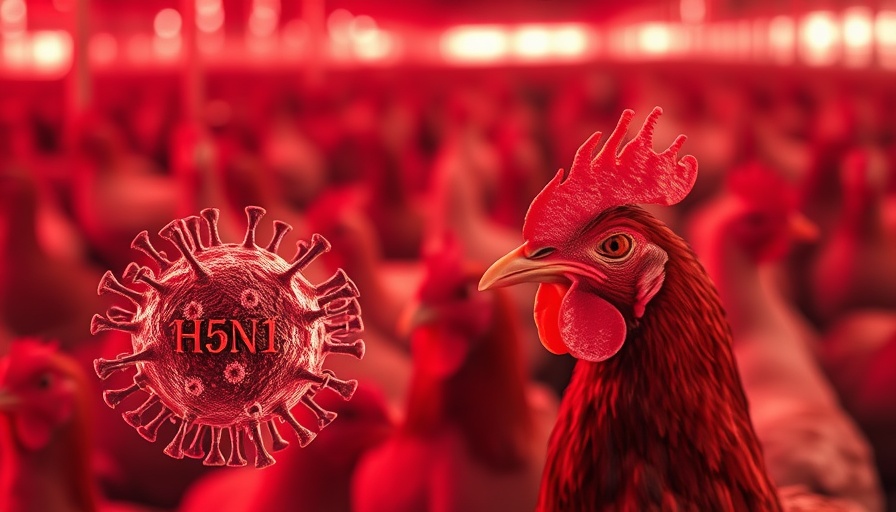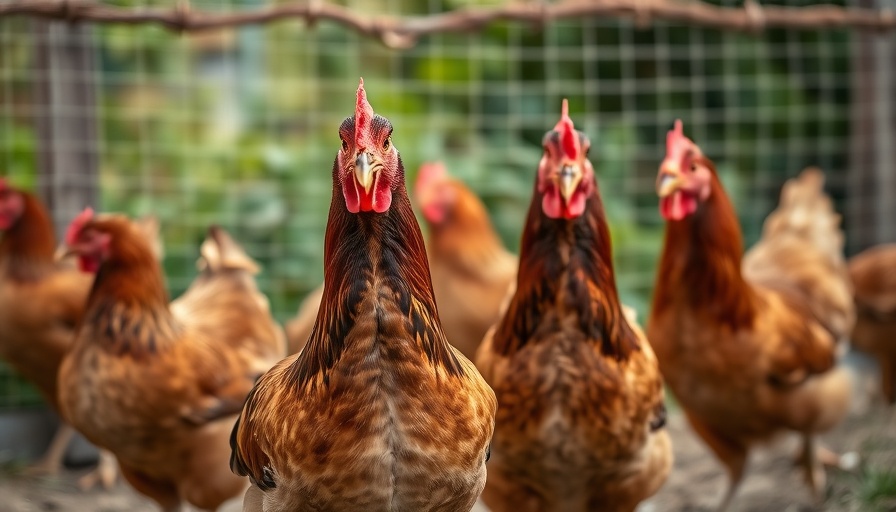
Understanding Avian Flu Spread in Cambodia: A Critical Update
As Cambodia continuously battles an outbreak of highly pathogenic avian influenza (HPAI), the situation grows increasingly alarming. Recent reports from the World Health Organization (WHO) indicate that the nation has confirmed its 15th human case of the H5N1 virus, as a string of new infections has emerged in both people and poultry.
Details of Recent Infections
In a concerning turn of events, three new cases of the H5N1 virus were reported just this past month, showcasing the virus's significant impact on public health. A six-year-old boy, a 26-year-old man, and another young girl aged six were admitted to hospitals with critical conditions after coming into contact with sick poultry. This highlights the alarming links between poultry health and human infections, underscoring the urgency of timely health interventions.
The Virulence of Clade 2.3.2.1e
The severity of symptoms observed in these Cambodian patients can be partially attributed to a new variant of the H5N1 virus, known as clade 2.3.2.1e. This variant has shown a fast spread among domestic and wild birds in Cambodia. Contrasting with human infections from other clades in different regions, which often result in milder symptoms, clade 2.3.2.1e poses a higher risk, particularly in vulnerable populations.
Regional Responses and Implications
In light of these developments, neighboring Thailand has heightened its surveillance of poultry, particularly near the Cambodian border. This vigilant response illustrates the interconnectedness of regional health security and the importance of monitoring any sign of poultry illnesses
Broader Context: Global Avian Flu Trends
Globally, H5N1 outbreaks continue to pose threats not just in Southeast Asia but also in other countries. In India, the recent emergence of H5N1 in poultry farms has added to the ongoing fears regarding food security and public health. Such occurrences indicate that the challenges with avian flu are far-reaching and require coordinated global responses to effectively manage their impacts.
Conclusion: The Importance of Awareness
As the situation unfolds in Cambodia, awareness and vigilance in poultry management practices must be prioritized. Commercial and small-scale farmers alike should adhere to biosecurity measures to prevent further spread, ensuring not just poultry health but also the safety of communities at large.
Keeping informed about avian flu outbreaks and understanding their implications can help mitigate risks. Communities should engage with local health authorities to foster better surveillance and rapid response efforts.
 Add Row
Add Row  Add
Add 




Write A Comment